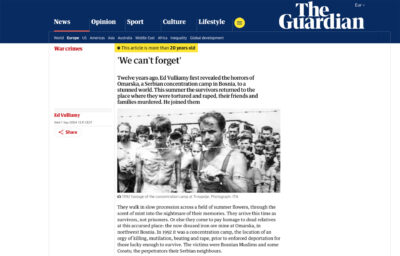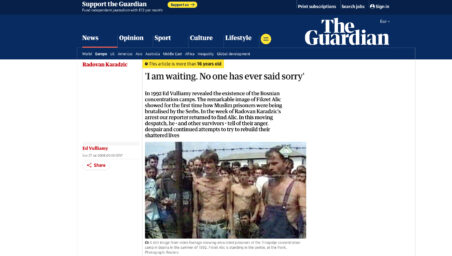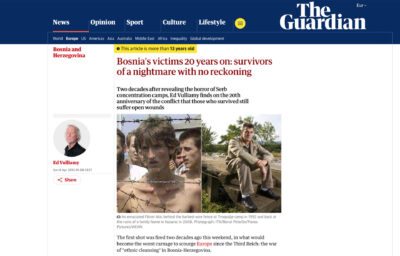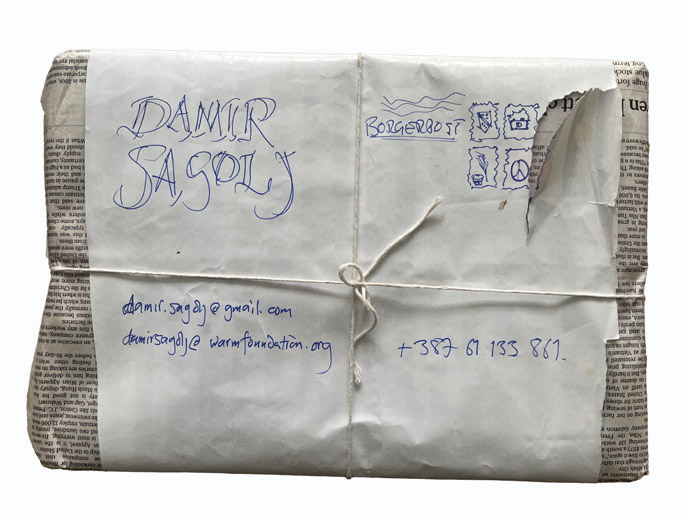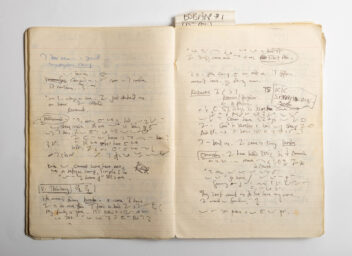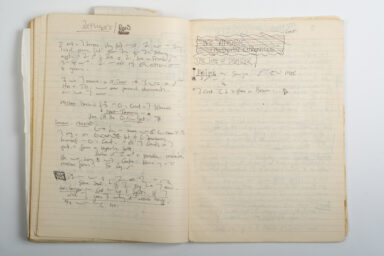
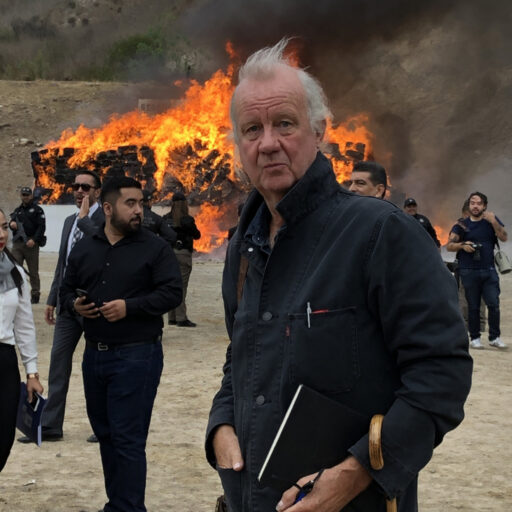
Ed Vulliamy
Journalist
Fikret Alić
Ed Vulliamy
Bosnia and Herzegovina, 1992
Dimensions: 210 mm x 297 mm
There is a way in which my life and excuse for a career is divided into that before 5 August 1992, and thereafter. Not many people have the accursed honor, aged 38, of walking through the back gate of a concentration, rape and death camp. Not many stories one writes from the ensuing notes gets a reaction from the President of the United States: George H. Bush’s hollow insistence that this this atrocity could not continue (it did).
Men emerged from the cavernous dark of a hangar at the Omarska iron ore mine, in various states of decay, drilled into a canteen to devour a ‘lunch’ of watery stew. There is nothing like the desperate stare of a prisoner who cannot speak; only one did so, and said: “I do not want to tell any lies, but I cannot tell the truth” His name was Džemal Paratušić. We were bundled out of the Omarska camp, and taken to another: Trnopolje, where we beheld skeletal Fikret Alić and others be- hind a barbed wire fence, with stories of mass executions at yet another, Keretem. My notes from that day are the record I have, the proof; I had no camera – the iconic image that traveled the world was a video-grab from film by my colleagues from ITN.
Accordingly, this notebook then went on an adventure of its own, one I could hardly have dreamed of at the time: entered into evidence at eight of the nine tri- als for which I testified at the International Criminal Tribunal for Former Yugoslavia in Den Haag. Including those of the war criminals on whose direct authority we entered the camp, called Stakić and Kovačević, and their génocidaire bosses, called Karadžić, Mladić and Milošević. If these scrawled and shorthand notes helped expose and close the camps, and put those evil fuckers into cells for the rest of their rotten lives, then something was achieved, if not nearly enough.
You will note that I misspelled dear Fikret’s name – dammit!

